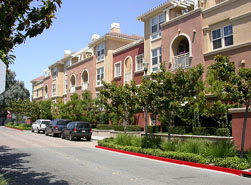News
Bay Area environmental group proposes hybrid levees for bay
Chris Palmer, San Mateo Times
As global warming escalates, San Francisco Bay's existing flood protection system will be no match for rising sea levels. But according to a new report by a Bay Area environmental group, fortifying the bay's shoreline with levees fronted by restored tidal marshes will be a cheaper, more aesthetic and ecologically sensitive alternative to traditional levees.
The Bay Institute's report proposes restoring tidal marshes with sediment from local flood control channels and irrigating the marshes with treated wastewater. The plan also calls for "horizontal levees" that are a hybrid of traditional earthen levees and restored marshes.
Tidal marsh restoration in the bay has been a priority for environmental groups since the 1970s. More than 5,000 acres have been restored in the past two decades, with another 30,000 acres purchased and slated for restoration.
"Marshes act as the lungs of the bay," said John Bourgeois, manager of the South Bay Salt Pond Restoration Project. "They can clean and filter the water that comes down our tributaries before it hits the bay."
The tall, dense vegetation of tidal marshes can also absorb a significant amount of the energy of surging ocean waves during storms. "The concept is a good one. The physics of it are accurate," said Lisamarie Windham-Myers, a wetland ecologist at the U.S. Geological Survey. "It's been proven over and over that wetlands help reduce storm surges." Therefore, she said, levees don't have to be as tall.
The Bay Institute estimates that shorter levees fronted by tidal marshes would bring down the cost from more than $12 million to less than $7 million per mile, while providing the same level of flood protection. With 275 miles of bay shoreline to protect, total savings could eventually exceed more than a billion dollars.
"We knew the cost would be reduced, but we were shocked at the actual savings," said Marc Holmes, the Bay Institute's marsh restoration program director.
Funds to build and maintain levees have come over the years in piecemeal chunks from the federal government and local floodplain control agencies. The result has been a patchwork quilt of aging earthen levees, designed to protect against present-day sea levels.
The Bay Institute report was released about three weeks after U.S. Sens. Dianne Feinstein and Barbara Boxer reintroduced the San Francisco Bay Restoration Act, which seeks federal funding for wetland restoration and water improvement projects in the bay and its watershed.
"We hope we have now given them the ammunition to say, 'Look, this is not going to cost us money, it is going to save us money,'" Holmes said.
As carbon emissions cause the Earth to warm, polar ice melts and warmer ocean water expands. Already, sea levels in the bay rose 8 inches in the past century, leading to occasional flooding of major regional roadways such as state Highways 37 and 101 during winter storms.
According to a 2011 National Academy of Sciences report, sea levels off the California coast south of Cape Mendocino will rise another 1.5 inches to 11.8 inches by 2030, 4.7 inches to 24 inches by 2050 and 16.5 inches to 65 inches by the end of the century.
Even a moderate rise in sea level will likely lead to increases in flooding frequency and intensity. Developed areas particularly at risk are San Francisco and Oakland international airports and tech giants such as Oracle and Facebook.
Though rising sea levels are a concern, winter storms riding in on higher tides can cause the most havoc. "In the next century, we're going to get more storms, fiercer storms," Holmes said. "Locations that were once outside of the danger zone are now inside, simply because storms are arriving on higher sea levels."
The goal of the Bay Institute study was to find a way to build a cost-effective network of levees that could lessen the flood threat caused by storm surges, while also providing benefits to the environment. The South Bay Salt Pond Restoration Project is considering a similar "horizontal levee" for its Alviso flood protection plan, which will be released later this year.
"With Hurricanes Katrina and Sandy, it has been well-documented that tidal marshes in front of levee systems do a great job of absorbing storm surges and add significant amounts of flood protection to the built environment," Bourgeois said.
The Bay Institute report imagines tidal marshes filled with silt to create a gentle upward slope from the bay shoreline to the top of a wedge-shaped earthen levee. Near the levee, tall, quick-growing plants with deep root systems would be irrigated with wastewater from nearby water treatment plants.
The sloping marsh can slow down storm surges, and the dense vegetation can absorb it like a sponge. Using marshes to buffer storm surges means earthen levees built on the landward side of the marshes can be built half as tall. As the vegetation grows taller and the root systems expand, the horizontal levee will be able to protect against the rise in sea levels expected in the coming decades, provided the restoration begins sooner rather than later.
Nearly 150,000 of the 190,000 acres of the bay's tidal marshes that existed in 1850 have been destroyed by conversion to uses such as salt evaporation ponds and agriculture.
Efforts to restore a few thousand acres of marshes that began in the late 1970s have now evolved into the largest marsh restoration plan in the country, with the goal of restoring 100,000 acres. The bay marshes are home to endangered species that exist nowhere else, as well as the largest estuary on the western coast of North and South America.
The Bay Institute report also recommends that Congress allocate $1 billion to establish a program administered by the Environmental Protection Agency that would coordinate the various efforts to restore and protect the bay.
Congress has established a handful of comparable programs for nationally important regions such as the Great Lakes and Chesapeake Bay.
"Obviously," Holmes said, "we could make that case in San Francisco Bay persuasively."







